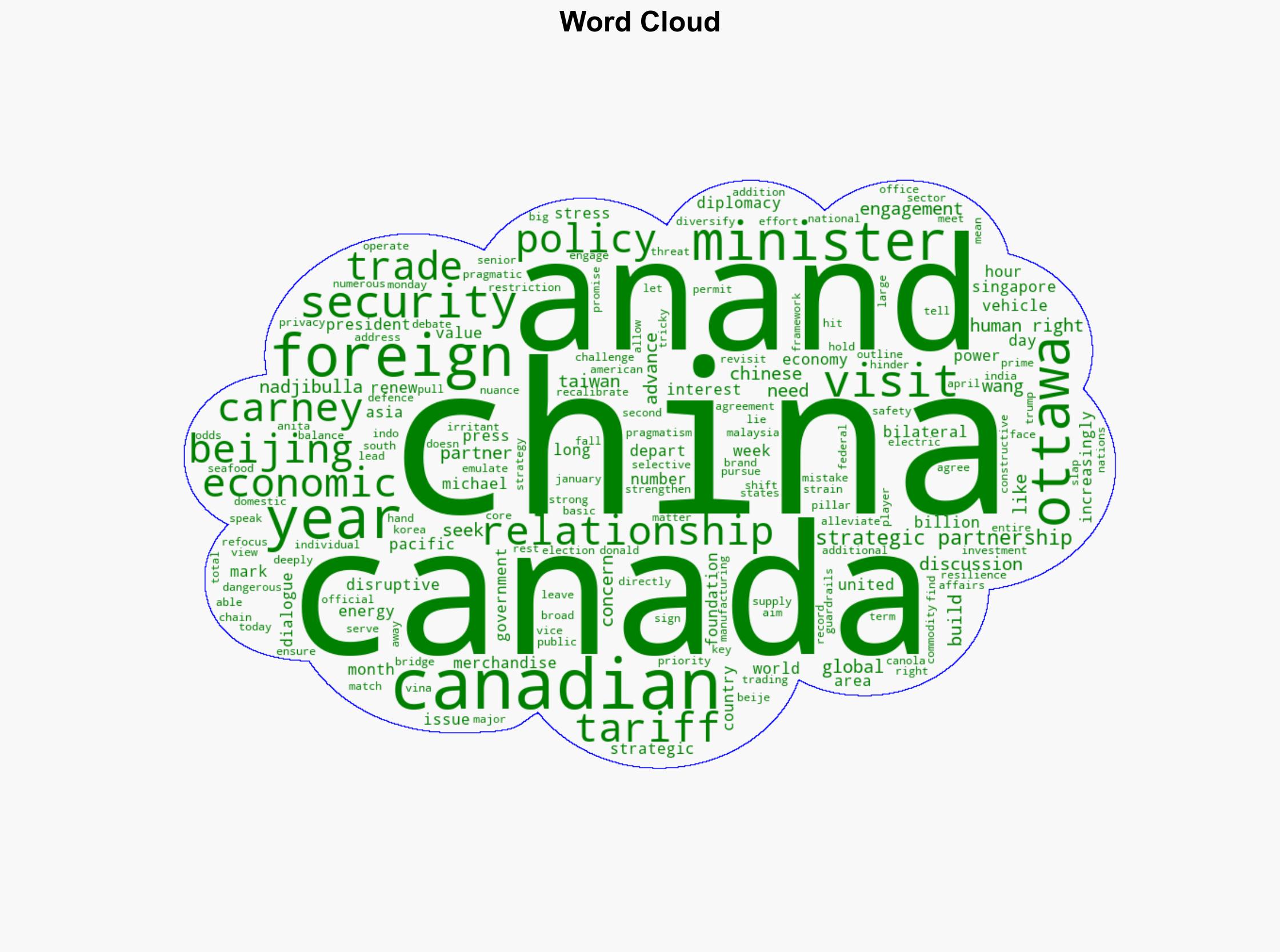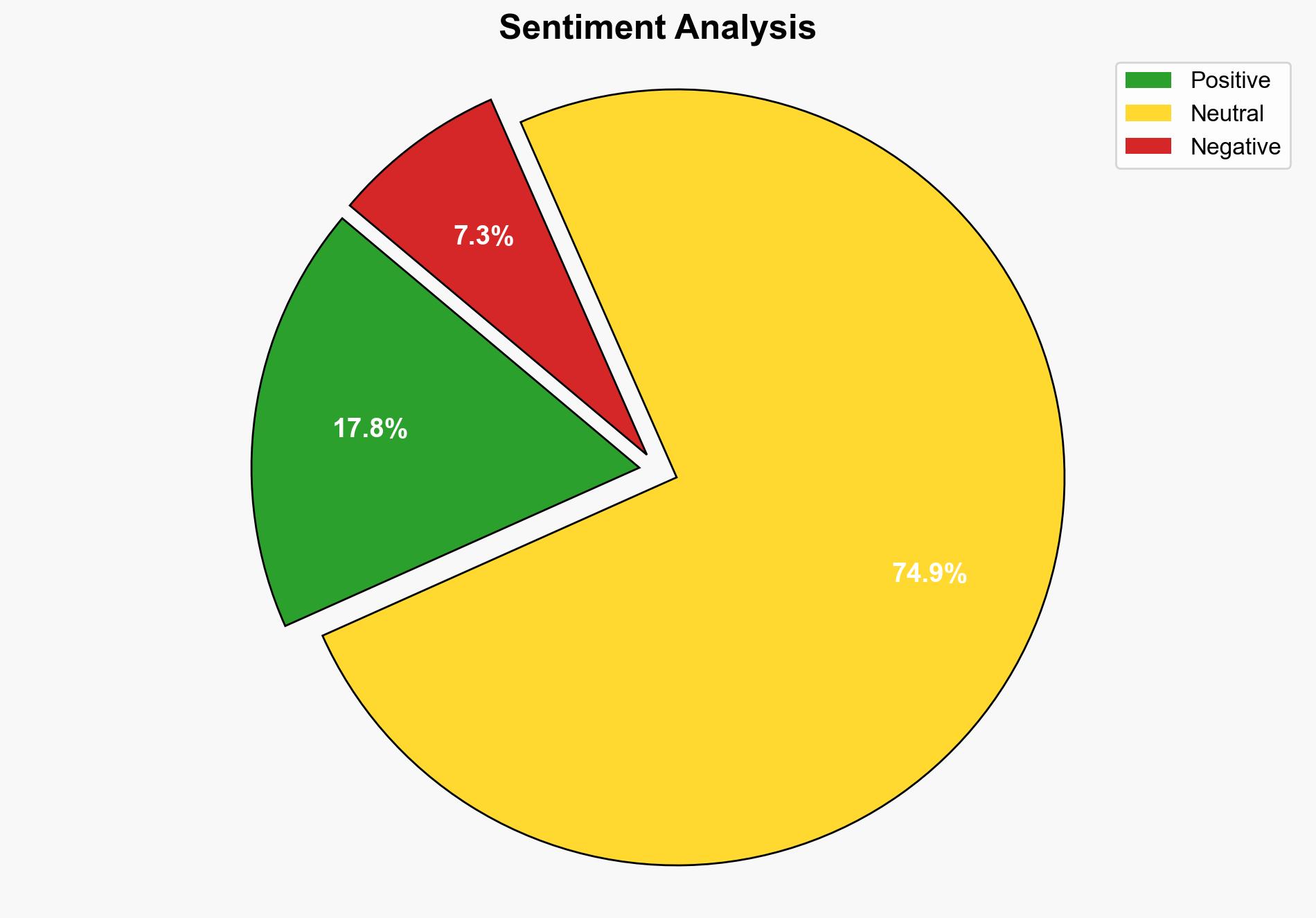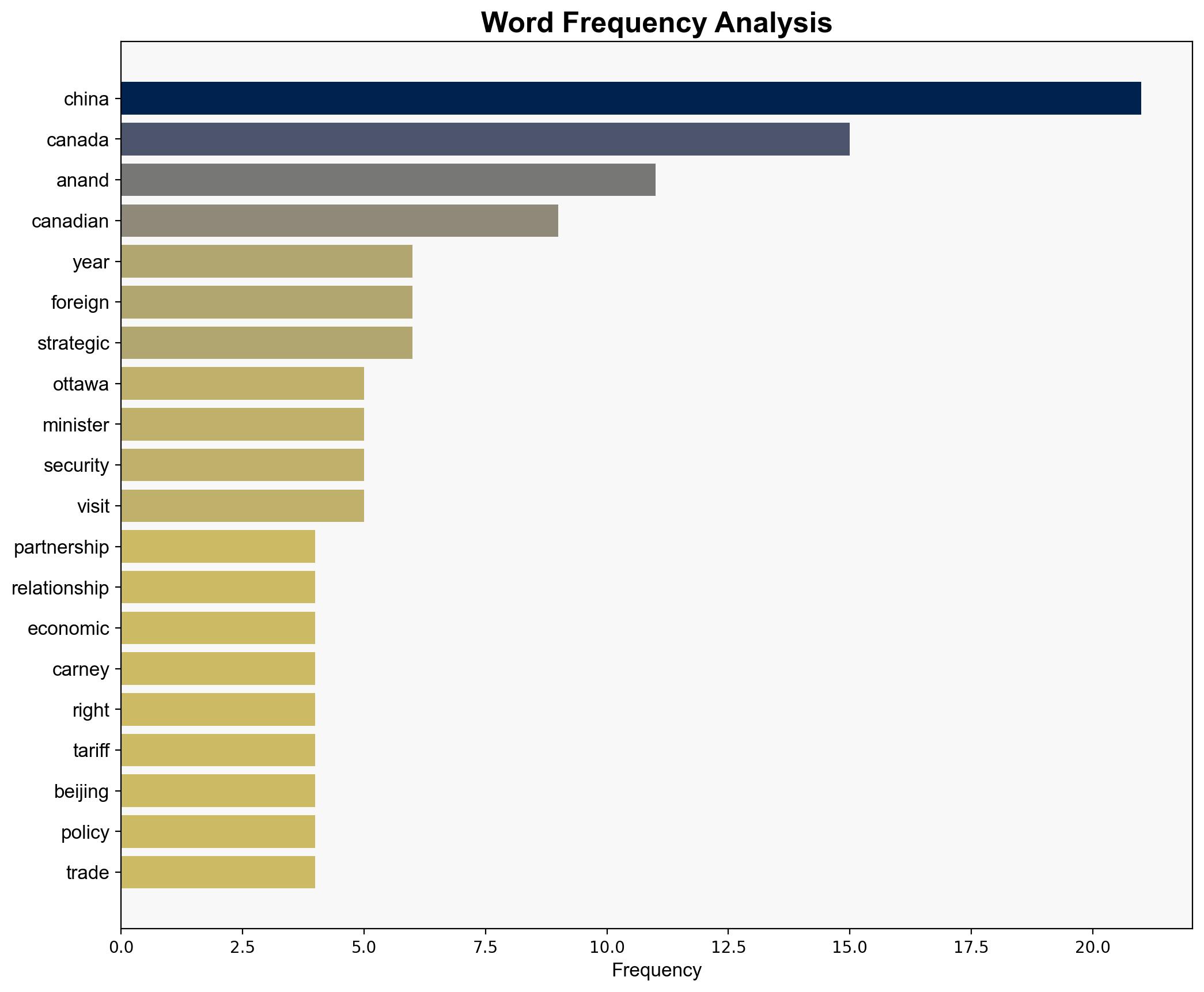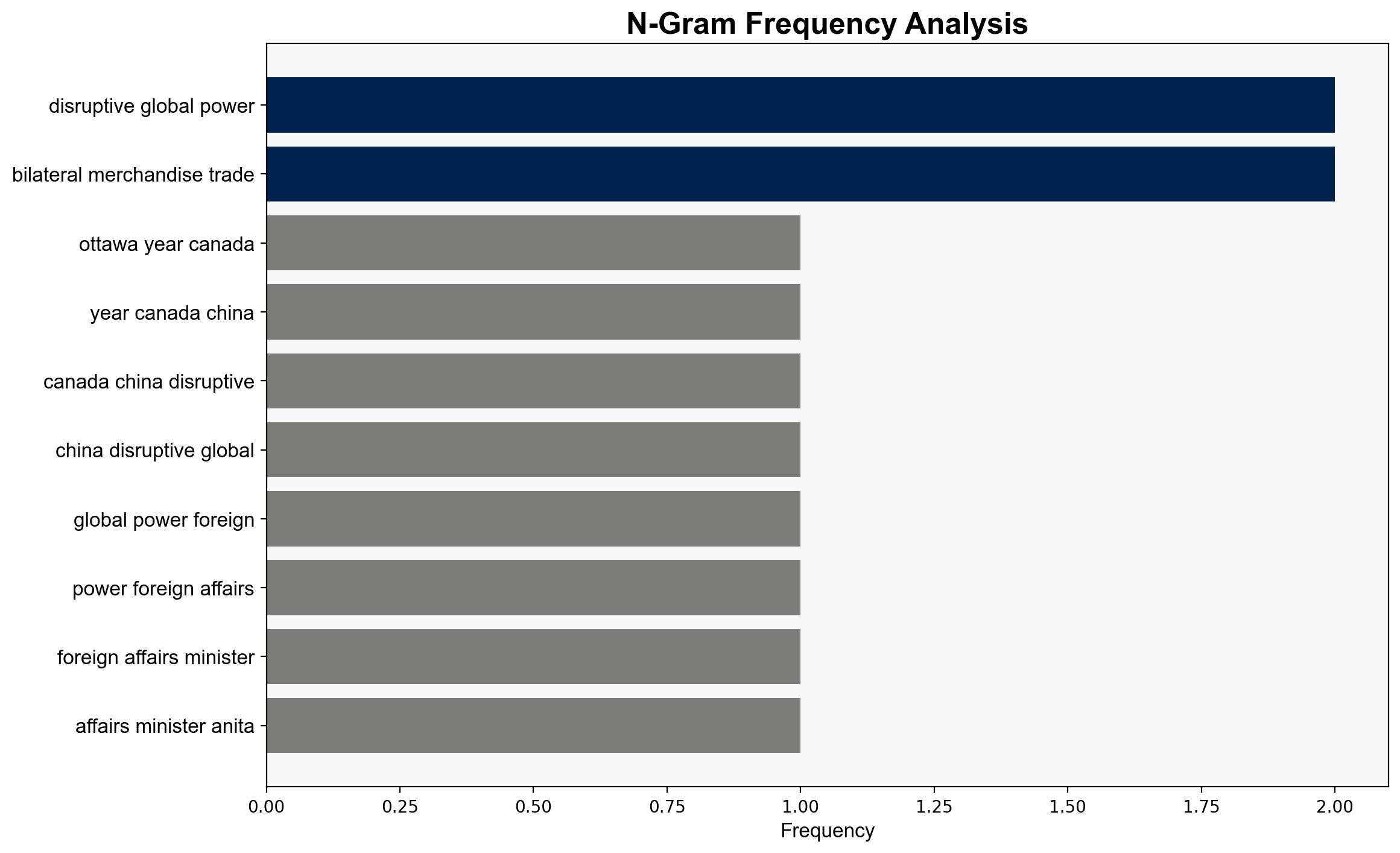Anand says Canada is in a ‘strategic partnership’ with China – Hoover.org
Published on: 2025-10-26
Intelligence Report: Anand says Canada is in a ‘strategic partnership’ with China – Hoover.org
1. BLUF (Bottom Line Up Front)
Canada’s assertion of a ‘strategic partnership’ with China reflects a nuanced diplomatic approach aimed at balancing economic interests with national security concerns. The most supported hypothesis is that Canada seeks to maintain economic ties while addressing security issues through compartmentalized engagement. Confidence level: Moderate. Recommended action: Canada should enhance its strategic communication to clarify its stance and ensure alignment with allies, particularly the United States.
2. Competing Hypotheses
1. **Hypothesis A**: Canada is genuinely pursuing a strategic partnership with China to bolster economic ties while managing security concerns through compartmentalization. This approach allows Canada to benefit economically without compromising on security and human rights issues.
2. **Hypothesis B**: The strategic partnership rhetoric is primarily a diplomatic maneuver to placate China while aligning more closely with Western allies. This could be a strategy to mitigate potential economic fallout from strained relations with China while maintaining a firm stance on security and human rights.
Using ACH 2.0, Hypothesis A is better supported by the evidence of Canada’s significant trade volume with China and the emphasis on economic resilience. However, Hypothesis B cannot be dismissed due to the geopolitical pressures from the U.S. and the recent history of tensions between Canada and China.
3. Key Assumptions and Red Flags
– **Assumptions**: Canada can effectively compartmentalize economic and security issues with China. The strategic partnership will not alienate Western allies.
– **Red Flags**: Lack of clarity on how Canada will manage conflicting interests with China and the U.S. Potential over-reliance on economic benefits without addressing underlying security threats.
– **Blind Spots**: The impact of domestic public opinion on foreign policy decisions, especially given negative sentiments towards China.
4. Implications and Strategic Risks
– **Economic Risks**: Over-dependence on China for trade could expose Canada to economic coercion.
– **Geopolitical Risks**: Misalignment with U.S. policies could strain bilateral relations, impacting broader North American security and economic frameworks.
– **Cyber and Security Risks**: Increased engagement with China may heighten exposure to cyber threats and intellectual property theft.
– **Psychological Risks**: Public perception of Canada’s foreign policy could shift negatively if perceived as too lenient towards China.
5. Recommendations and Outlook
- Enhance strategic communication to clarify Canada’s position and align with allies.
- Develop contingency plans to mitigate economic risks from potential Chinese coercion.
- Strengthen cybersecurity measures to protect against potential threats from increased engagement with China.
- Scenario Projections:
- Best Case: Successful economic engagement with China without compromising security, leading to diversified trade and strengthened alliances.
- Worst Case: Economic over-reliance on China leads to coercion, straining relations with the U.S. and impacting national security.
- Most Likely: Continued diplomatic balancing act with moderate economic benefits and manageable security risks.
6. Key Individuals and Entities
– Anita Anand
– Mark Carney
– Vina Nadjibulla
– Michael Kovrig
– Michael Spavor
7. Thematic Tags
national security threats, economic diplomacy, geopolitical strategy, Canada-China relations





